
My interview on Sikhnet.com dt 27/3/2014
Was there a point in your life which you could say started you on the path of photography?
I am a born wanderer. Wanderers don’t need a point of deflection to find new inspirations. It is my innate nature to always look at my surrounding with an explorers vision, which has enabled me to pursue divergent activities in my life. I see myself as a white cloud floating freely in the sky, unknowingly abandoning myself in search for the unknown, which eventually has always lead me to an aim that has always been present but hidden deep inside me. Journey of life has to be experienced through effort. One can never know what lies ahead, but a step in the right direction, with the right effort will ultimately result in a bloom.
Photography is just one small outcome of my larger wandering footprint.
For me life has created a lot opportunities and equal share of challenges. The only thing I have done during challenging times is to continue to steer the ship through the storm, learning from the environment and transforming myself to emerge wit something new.
At the young age, faced with a challenge at home I diverted my mind to a maniacal pursuit for a better grip on the history of Punjab. A challenge in the early stages of my career turned my attention to exploring Tabla, which became a stepping stone to learning Keertan and thereafter a passion for understanding the musical framework of Adi Granth. When we moved to Hong Kong in 1999, the daily commute to work and back home would give me an opportunity of two hours in the bus, which I started utilizing to read Gurbani from Sahib Singh’s Darpan translation of Adi Granth. This monumental 10 volume work was read end to end over a two year period while on the bus. It improved my Gurmukhi and opened a door to spiritual understanding. From here started my journey to read more about diverse Indian philosophical systems, opening my mind further.
In year 2009, I started feeling that God’s creation was calling me to experience it through a lens and it is then I picked the camera. Mastering the art of capturing creative beauty of the world through a lens was just a start of another journey that soon enabled me to express my inner feelings in a weekly photography blog at amardeepphotography.com. Today I am seeing myself having further transformed into an experience based writer. My photographs with stories have featured in magazines like Asian Geographic.
Every experience of my life has had a contribution to my transformation into an experience based photographer and writer. While in the hindsight I can easily say that I started photography in the year 2009 but without my years of effort in other passionate pursuits, I would have never reached here. Today, through my photography, I am always looking for a deeper meaning, an essence that is normally hidden in the picture. Sometimes it feels I am constantly in search for something! Mostly, the search is not far as the answer resides within. When my mind becomes still, an energy gravitates me to discover it. Muddy water becomes clear if allowed to stand undisturbed, and so does the mind become clear, if stilled.
As Guru Tegh Bahadur says on page 684 of Adi Granth.

Like the fragrance which remains in the flower, and like the reflection in the mirror,
He dwells deep within; search within your own heart, O brother.
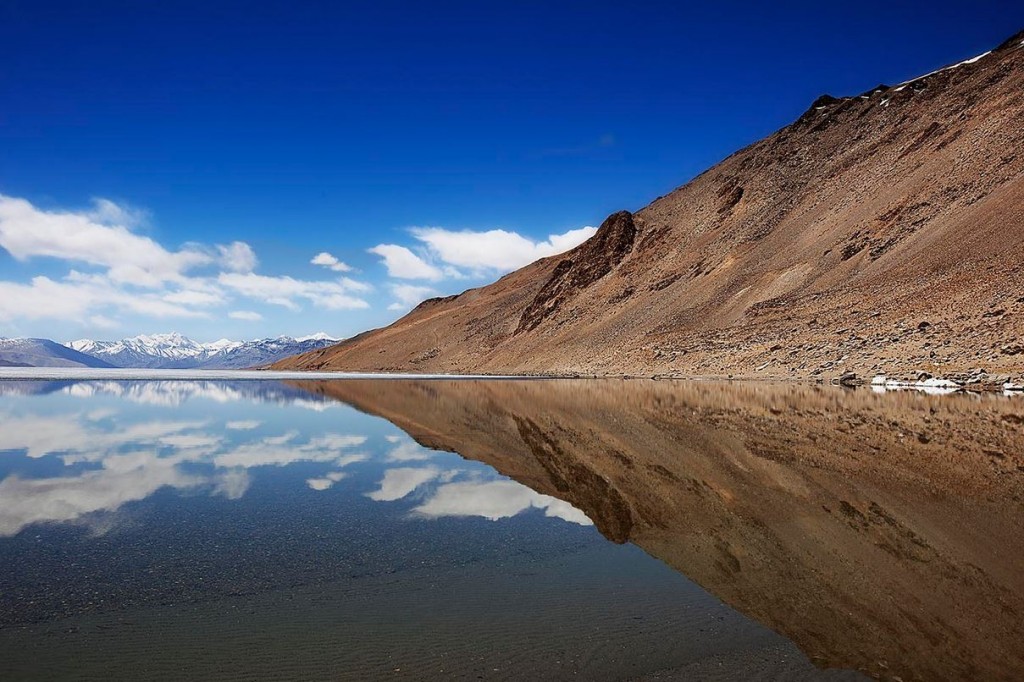
Photo : Clear reflection of mountains in lake Tso Moriri, Ladakh
What’s the most interesting thing you’ve photographed?
Any experience that one tries to see from the depth of one’s being will be interesting. I base my photography experiences with subtleness of my intrinsic voice.
For example, there may be nothing interesting in photographing a moon. However in this photo of a rising moon over a tree, shot in the cold Himalayan night at Syalsaur (India), before the moonrise all I could see was a patch of bright light illuminating a single large tree on top of the mountain. The tree, shining in the light, seemed to be making a statement, “look at me, It’s my night”. Moments later, as the moon rose above the horizon, it all fell in place. The tree now seemed to be saying, “I now realize: how small I am”.
The message going beyond the photograph is that the process of learning feeds the Ego, creating a mist around the mind. It leads to believe that one knows everything. Hence association with people of greater knowledge is very important.
As Kabir says on page 339 of Adi Granth.

When I was, then You were not; now that You are, I am not.

Photo : Moon in the cold Himalayan night at Syalsaur
Your images are featured in Asian Geographic. As a photographer that must have been a great moment when you reached that status. What was that like for you?
Every success or failure is a momentary instance. I see these moments as a learning. Indeed when ones work is recognized, it is an affirmation that past efforts were in the right direction. Regular featuring of my articles and images in magazines like Asian Geographic is a stepping stone to yet another transformation awaiting to happen. Hence what matters is my love and passion for what I am doing. To me it’s not the destination but the journey that is important. I try to remain above the momentary praise and also try to learn from slander.
Guru Nanak on page 963 of Adi Granth says,

I have totally discarded praise and slander, O Nanak; I have forsaken and abandoned everything.
I have seen that all relationships are false, and so I have grasped hold of the hem of Your robe.
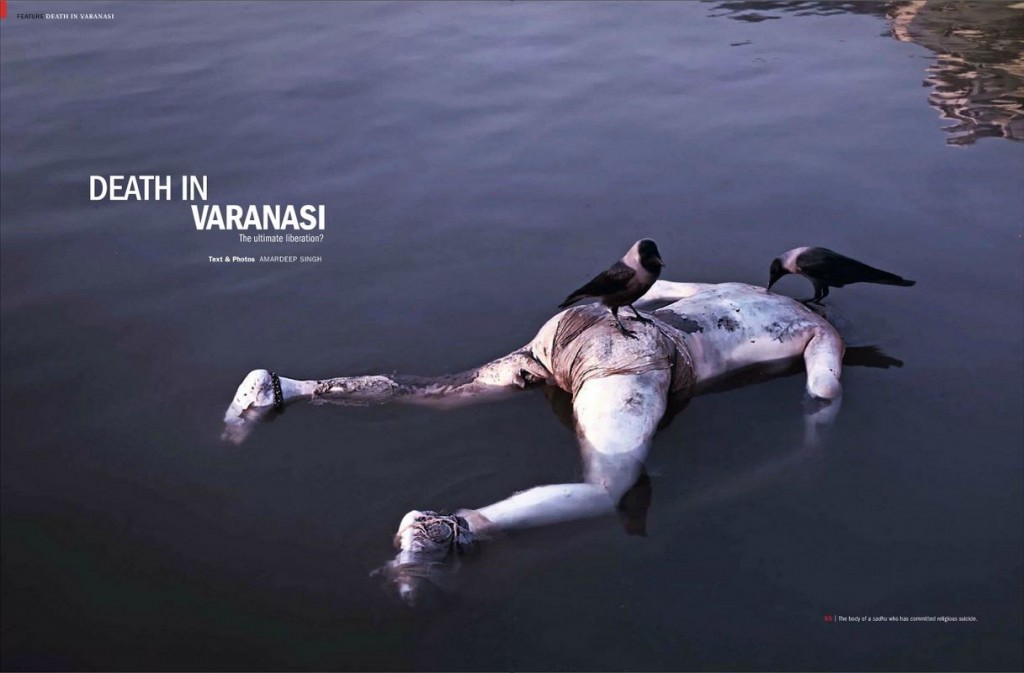
Article “Death in Varanasi” featured in Asian Geographic magazine (Issue 8/2012)
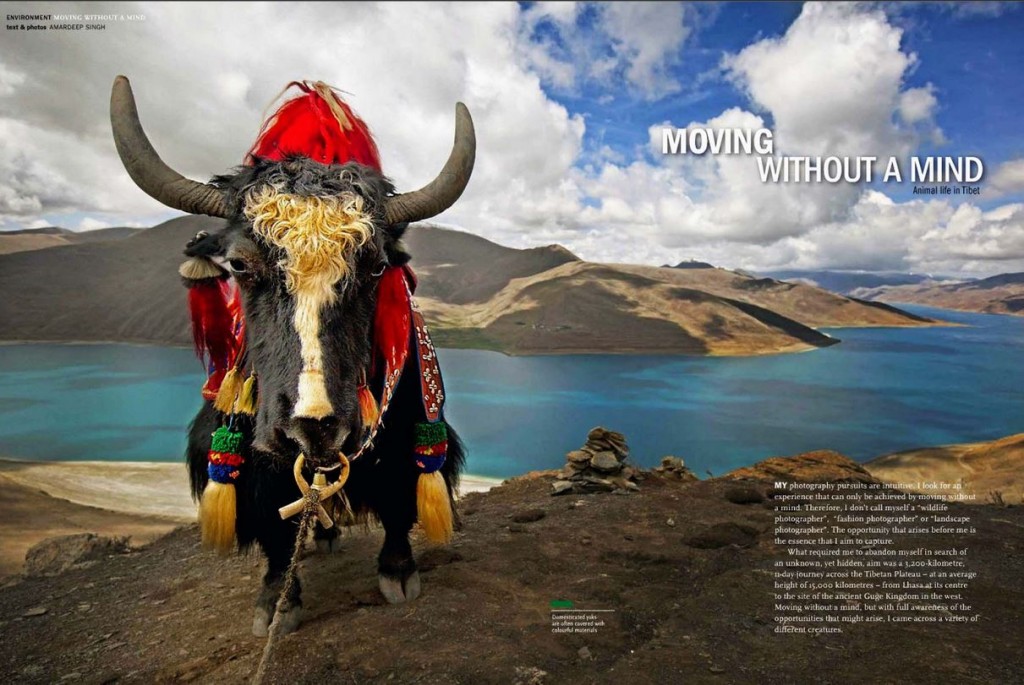
Article “Moving Without A Mind” featured in Asian Geographic magazine (Issue 1/2013)
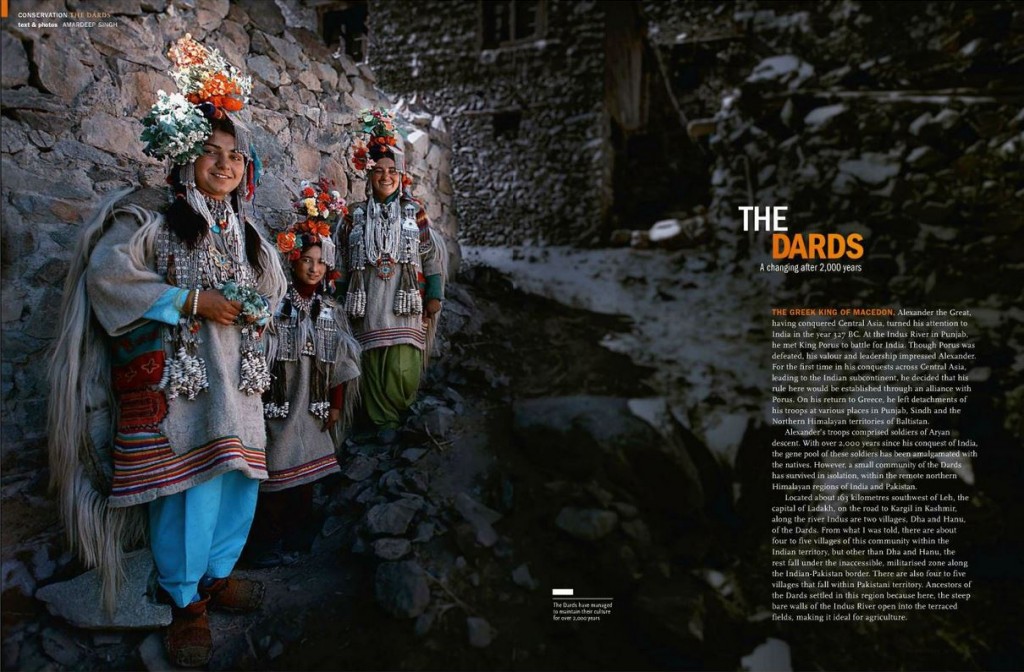
Article “The Dards” featured in Asian Geographic magazine (Issue 5/2013)
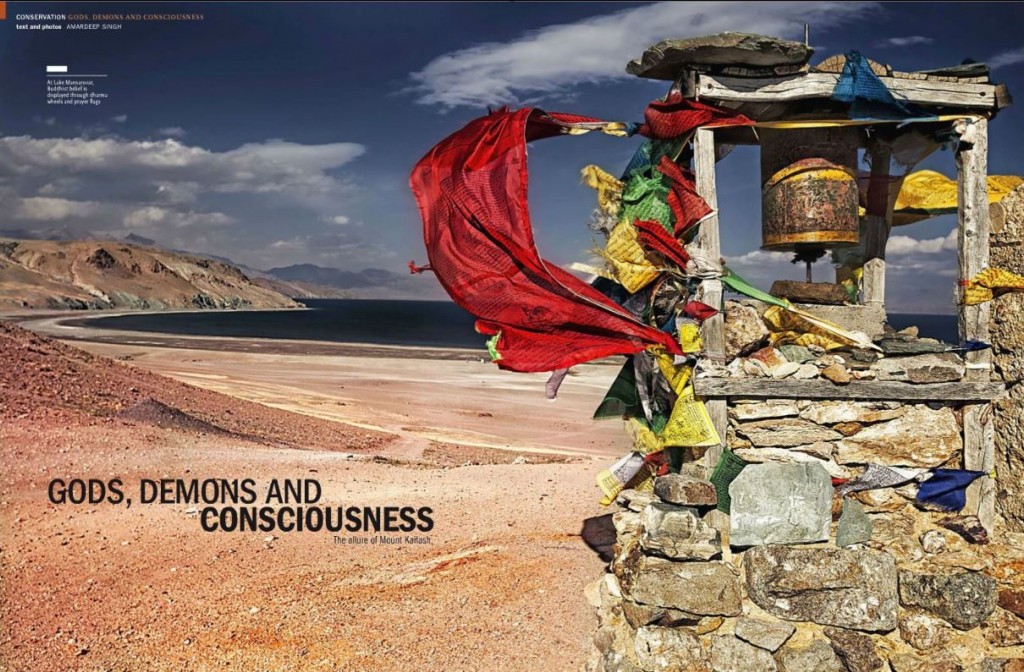
Article “Gods, Demons & Consciousness – Allure of Mount Kailash” featured in Asian Geographic magazine (Issue 6/2013)
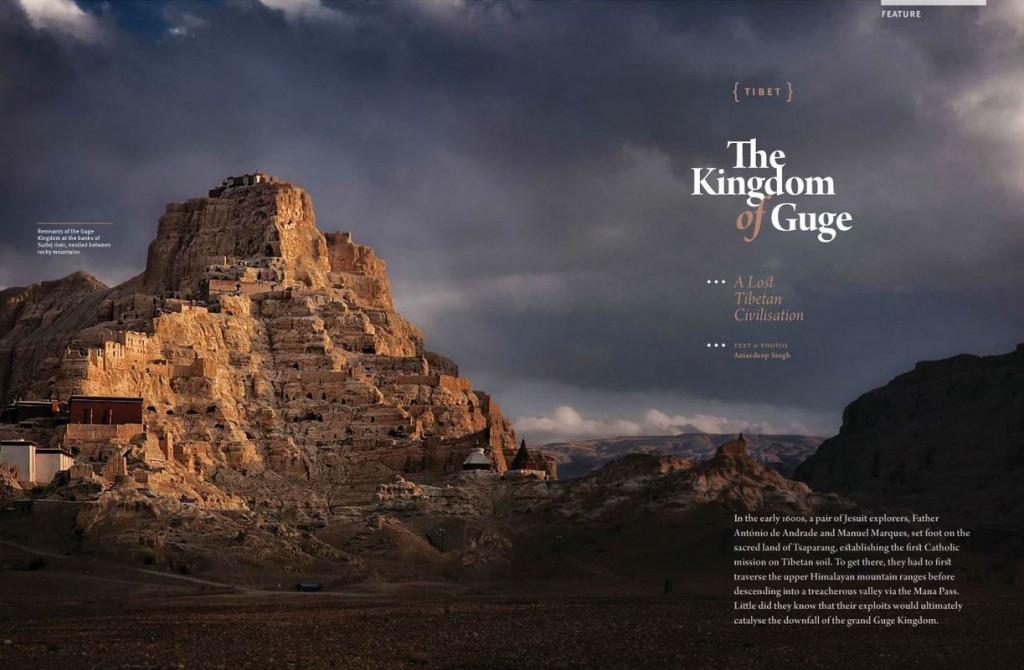
Article “The Kingdom of Guge – A lost Tibetan Civilization” featured in Asian Geographic magazine (Issue 1/2014)
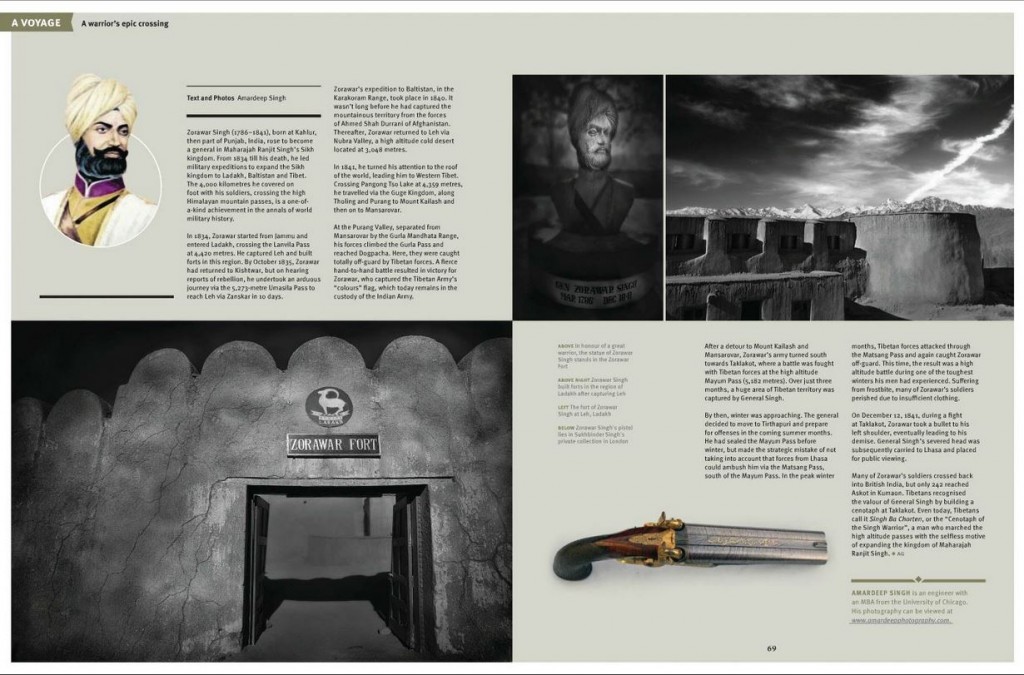
Article “The voyage – A warrior’s epic crossing” featured in Asian Geographic magazine (Issue 1/2014)
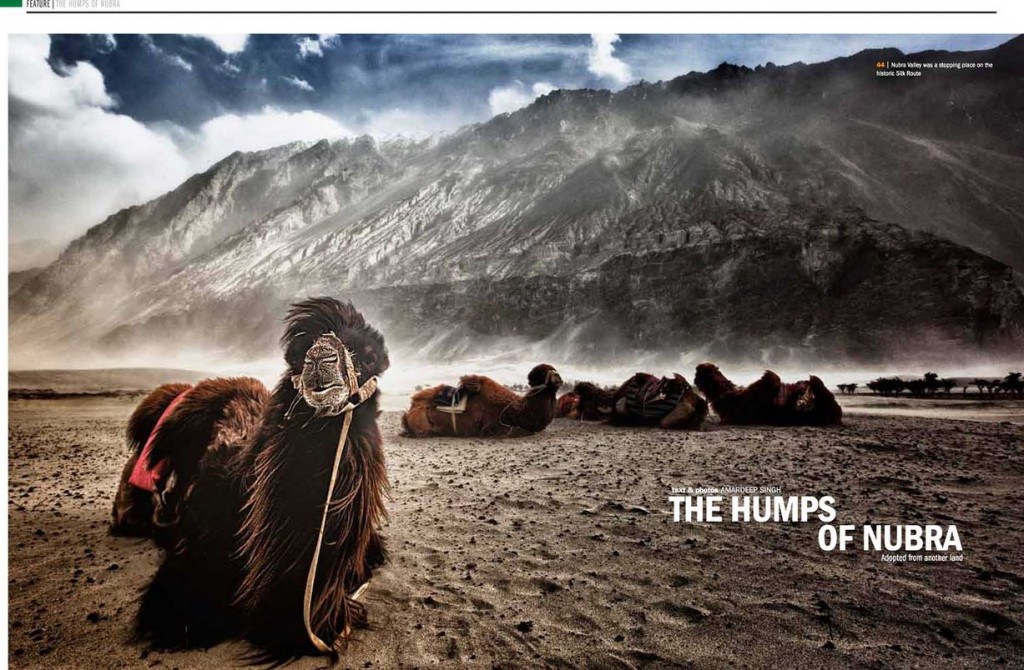
Article “Humps of Nubra” featured in Asian Geographic magazine (Issue 8/2011)
In your bio you say, “I have earned my living through a rationale left brain approach in the Corporate world, while simultaneously building my creative potential by continuously tapping it’s right side.” Can you expand on this?
For most of us the purpose of life is limited to performance of daily chores. In today’s western influenced world, ones success is normally judged by status, career and monetary aspects alone. My definition of worldly success is anchored in the objective of becoming singular with oneself, from within and outside. To achieve this singularity of my being, I have always put an equal importance to self development through passions while simultaneously achieving worldly success in the corporate world.
I have always viewed my rationale left brain as an instrument for achieving worldly success through the motto, “work is worship”.
But without internal success, this life experience would be wasted. It is here that I have always challenged my right brain to find creative experiences. Once I find a new purpose then it is always a process of
Preparation : A stage where I make effort to learn about the new found purpose.
Incubation : The stage of quiet thinking to let the passion reach the boiling point.
Insight : Then suddenly the realization happens. It’s like God’s grace has fallen.
Manifestation : Now focus shifts to bringing insight into form for sharing with others.
Balancing to excel on both fronts is never easy. It’s like walking on a razors edge.
As Guru Amar Das says on page 917 of Adi Granth.

This path is sharper than a double-edged sword, and finer than a hair.
I saw the act of balancing beautifully displayed by the fishermen at Inle lake in Myanmar. They have a unique fishing style that is one of a kind in the world. Only one fisherman will be found on a boat and is always standing at the edge, somehow achieving the perfect balance. It’s impressive that they row only with their legs, keeping their hands free to manage the finishing nets, which they cast and pull with ease while rowing at high speed. Their conscious mind may be fixated on spotting a school of fish and casting the net to catch them. However it’s the quantum of tasks they skillfully perform with the sub-conscious mind that amazed me.
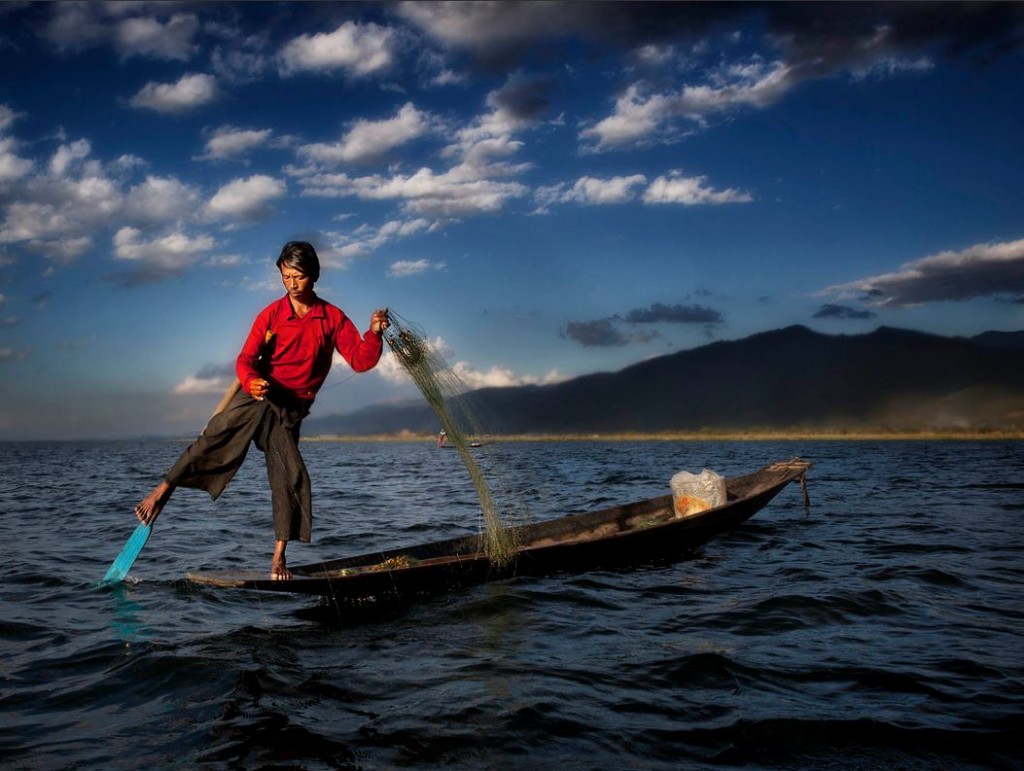
Photo : The fine act of balancing by the fishermen of Inle lake, Myanmar
What stories are you trying to capture and tell?
My photography pursuits are intuitive and my mental state with a camera in hand is like a white cloud. ‘The being of a white cloud, it’s pathless way, is a mystery. It moves not with a fixed mind – but without a mind.’
When I am out photographing, I look for an experience that can only be achieved by moving without a mind. It’s the opportunity that arises before me, is the essence that I aim to capture.
As Guru Arjan Dev says on page 214 of Adi Granth.

As long as I claimed, “I did, I did!”, I went around in circles.
But when I dedicated my mind, body and intellect to Him, I obtained equipoise.
|
|
For example, had I been moving with a mind at Gyantse fort in Tibet, then all I would have achieved is to photograph the fort. However a simple act of exchanging a subtle smile with an old Chinese man, opened the possibilities of a dialogue. I was surprised to learn that 23 and 32 Sikh Pioneer regiments in 1904 marched into this remote area of Tibet with Col. Francis Younghusband to nullify the Russian threat under the political “Great Game” being played in Central Asia. Later I researched and found old sketches of this expedition that are featured in my blog link
amardeepphotography.com/sikh-soldiers-in-tibet
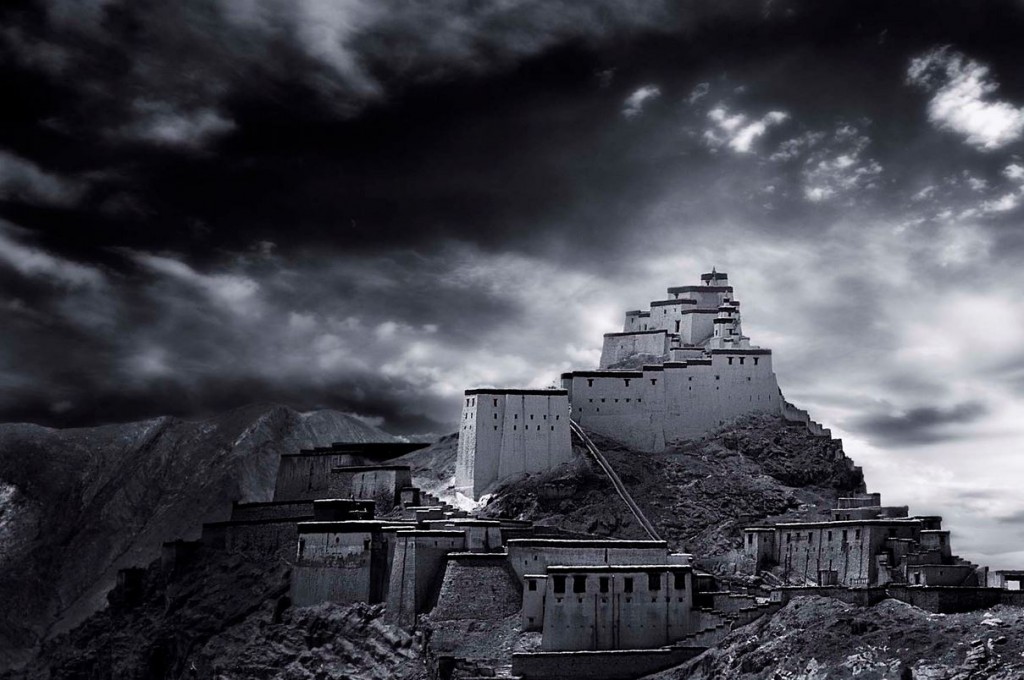
Photo : Gyantse Fort, Tibet. The last battle fought by 23 and 32 Sikh Pioneer Regiments that marched into Tibet with Col. Francis Younghusband in 1904.

Sketch of the Sikh Regiment in Tibet as published in LIFE magazine.
How have those stories impacted you?
I always strive for a personal learning through the stories captured during my photography pursuits. It’s when the story settles within me and starts resonating with my inner being, I then let it manifest through my photography based writings.
When you feel passionately about something, it will also connect with others.
For example moving without a mind in the back alleys of Pushkar in Rajasthan (India), I saw a crippled man sitting between his stirrups. He seemed content, enjoying the song beamed from a very old radio, his only valuable material possession. While he had a beggars bowl in front of him, he was not soliciting for alms.
There was something different about him!
The act of looking beyond the camera and trying to connect with the creation is what I find most stimulating. I use the camera as my stirrup to help me move towards the act of “seeing beyond seeing”! While I could see a strong composition but rather than aiming my camera for a click, I had an intuitive call to squat next to him. So in a few moments I was in a conversation. His fluency in English was an indication that he had a different past.
He hailed from Andhra Pradesh and was now living in Pushkar for the past 15 years. He was once an employee of a large organization in his home state. Life seemed to be on the right track till he met with a road accident, losing one of his legs. Insurance claims provided him with a paltry sum. Life threw another challenge when he lost his wife. Having got his only daughter married, he embarked on a soul searching journey, which got him to Pushkar. It’s then he learnt to accept life, embracing it in totality, like the sky always conforms with the horizon. The horizon may have clouds, trees or buildings but the sky will always adapt.
His wisdom was more than mere words.
For me it was a personal learning that adaptability is the essence of life.

Photo : A man in Pushkar who taught me about adaptability.
What impact are you hoping to have with viewers?
I aim to touch my viewers with a message that is different from what other photographers are presenting to their viewers. Therefore I do not restrict my work to any specific genre of photography. In addition, I photograph and write about diverse experiences, presenting them in the anchor of a self realization message.
For instance, in the fashion genre, while photographing a model where my objective was to bring out the intensity of her eyes, I have presented this work with a deeper philosophical message about the Creators act of observing Himself in His creation through our eyes.
As Guru Arjan Dev says on page 294 of Adi Granth.

Through all eyes, He is watching Himself.

Photo : A model shoot to present the intensity of her eyes.
In your blogs you often include Gurbani Shabads. It seems you have the inclination to see the world before you and be reminded of Gurbani. For example in your post ‘Elusive’ you are in Myanmar capturing the dramatic lighting on Buddhist monks and in your thoughts you are contemplating the words of Guru Nanak. How do you think you came to see the Guru in the world around you?
I am not certain if it is the world that reminds me of Gurbani or the reflection into Gurbani that reminds me of the worldly existence. It is a tangle indeed.
I believe the answer to this question lies in my response to the first question of this interview about when I started on the path of photography. As I said, the only thing I have done during challenging times is to continue to steer the ship through the storm, learning from the environment and transforming myself to emerge with something new. These collective life experiences have made me what I am today.
I am therefore indeed caught in a positive tangle and I am glad to be so.
It is the source of my creative engine. It is with this background, when capturing the dramatic natural lighting on the monks as Shwedagon pagoda in Yangon, Myanmar, I was reminded of Guru Tegh Bahadur’s saying on page 537 of Adi Granth. .

No one knows the state of the Supreme.
Yogis, celibates, penitents, and all clever people have failed.
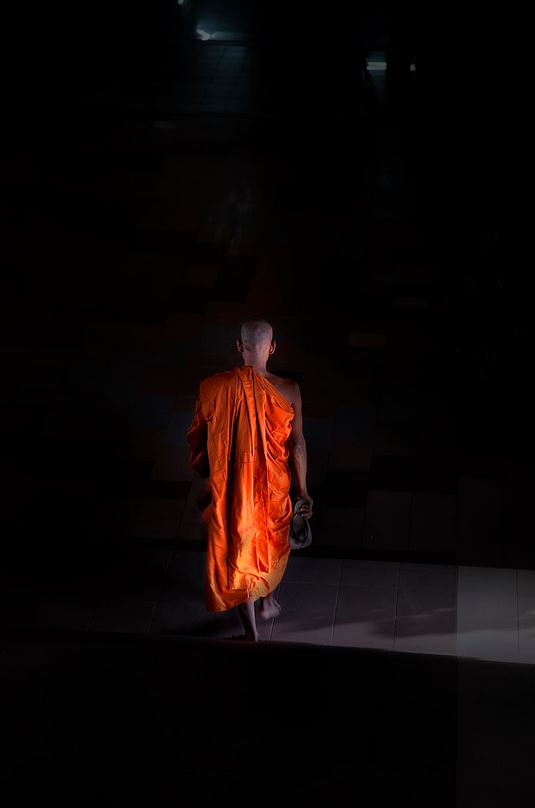
Photo : A Buddhist monk at Shwedagon pagoda in Yangon, Myanmar.
Amardeep was born in India and is now based in Singapore. He schooled across boarding institutions from a very young age at Dehradun (India), first in Welham Boys School and then at The Doon School. His professional education is mixed with an engineering degree from Manipal Institute of Technology, in South India, as well as MBA from the University of Chicago. He worked at American Express for twenty years, being based in India, Hong Kong and Singapore, leading the Asia Pacific region for Revenue Management of the Card Business. He is now an Independent Business Consultant, managing strategic and revenue management projects across Asia Pacific region.
He is also a passionate photographer and a writer with an eye to spread deeper essence of life.
Amardeep’s works have featured regularly in reputed magazines like Asian Geographic. He engages with his audience through his blog at amardeepphotography.com
Through his creative work, he tries to SEE BEYOND SEEING.

Comments(3)
Arjit Mahal says:
March 29, 2014 at 1:26 AMAmardeepji: Your photographs are deeper than thoughts; Your subjects convey profound messages; your mission is a noble one. Fare well in the journey of your life.
Rajinder singh says:
March 31, 2014 at 3:50 PMDear Amardeep,
The glimpses of divinity are clear in your thoughts and photos.I close my eyes and see all the objects I loved since my childhood.
Hugged them all I like and loved too touch.
Amardeep on going through the Interview it explain:
Love is the realm of infinite reality of the unknown and unexplainable with no justifications and explanations of its thoughts and actions.
The logic pertains to realm of limitations and observations.
Heartiest Congratulations and best wishes.
Rajinder Singh
Yashpal Singh says:
April 9, 2014 at 6:28 PMDear veer Amardeep Singh JI: WJKK WJKF
The photos are breathtaking and the thoughts are ennobling.Keep the great work up.